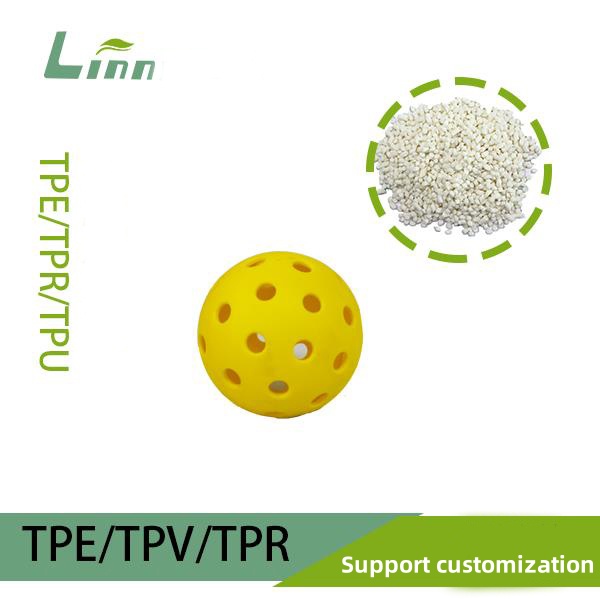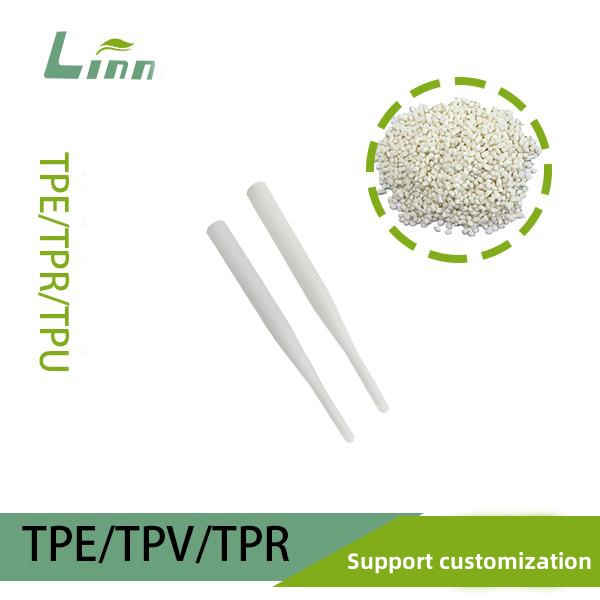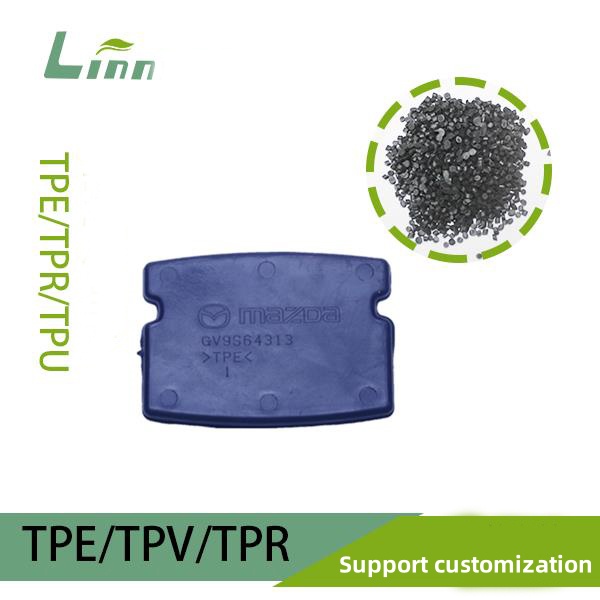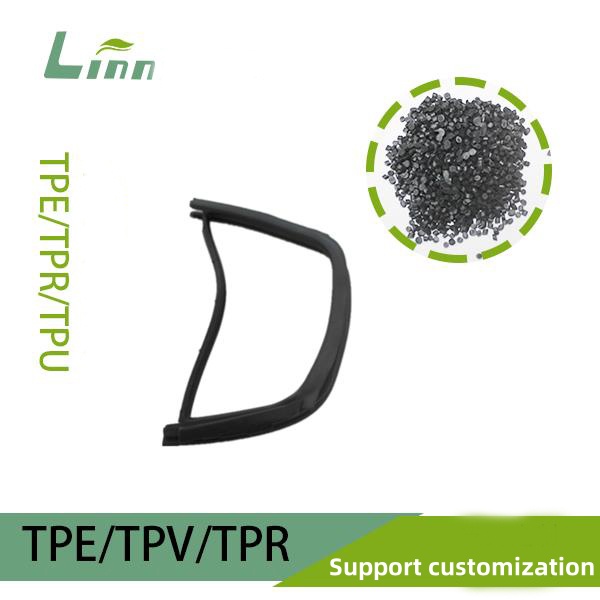Having spent years working with TPE (Thermoplastic Elastomer) materials, I understand why transparent TPE is a top choice for products like phone cases, medical devices, and food packaging. Its clarity, flexibility, and eco-friendliness are hard to beat. But there’s a common issue that can frustrate users: scratches and whitening. These surface flaws not only spoil the look but can also raise concerns about quality. Drawing from my hands-on experience, I’m here to explain why these problems occur, how to fix them, and how to prevent them, so you can keep your TPE products looking pristine.

Why Do Scratches and Whitening Appear on Transparent TPE Materials?
To tackle these issues, we first need to understand their causes. Over the years, I’ve dealt with countless surface problems on transparent TPE products and pinpointed the following reasons:
Material Hardness and Surface Properties
Transparent TPE typically has low hardness (Shore A 20-90), making its surface prone to scratches from hard objects. Whitening, on the other hand, happens when stress causes micro-cracks or molecular chain disruptions in the material, creating white patches.
Manufacturing Imperfections
Rough mold surfaces, improper use of release agents, or incorrect processing temperatures (too high or too low) can leave micro-scratches on the product or create stress points during cooling, increasing the chance of whitening.
Usage and Handling Issues
In daily use, transparent TPE products may come into contact with sharp objects like keys or fingernails, or endure friction and pressure. These can cause scratches, and in cold or humid conditions, the material is more likely to whiten.
Material Formulation Problems
If the TPE blend includes poorly balanced tougheners or fillers, the surface’s abrasion resistance suffers, making scratches and whitening more likely.
Improper Storage or Transport
During shipping or storage, products squeezed together or rubbing against rough surfaces can develop scratches. Accumulated stress may also trigger whitening.
With these causes in mind, we can move on to practical solutions for fixing and preventing these issues.

How to Remove Scratches and Whitening from Transparent TPE Materials?
Through years of trial and error and discussions with industry peers, I’ve honed a set of effective methods for dealing with scratches and whitening on transparent TPE. Here are the best approaches for various situations.
1. Polishing for Minor Scratches
For shallow scratches, polishing is a quick and straightforward fix. I’ve used this method on transparent TPE phone cases with great success, restoring their smooth finish almost instantly.
Steps:
Gather ultra-fine sandpaper (2000-3000 grit) or a polishing cloth—avoid anything too coarse.
Clean the surface with warm water (about 40°C / 104°F) and a neutral detergent to remove dust and oils.
Gently sand the scratched area in a wet state with even pressure for 1-2 minutes.
Wipe the surface with a clean polishing cloth to restore shine.
Tips:
Be gentle to avoid creating new scratches or clouding the surface.
This method isn’t suitable for deep scratches or large damaged areas.

2. Heat Treatment
Heat treatment works well for minor scratches and some whitening. When working on transparent TPE medical tubing, I found that controlled heating can help realign surface molecules, smoothing out imperfections.
Steps:
Use a heat gun or warm water, keeping the temperature at 50-70°C (122-158°F)—check the material’s heat tolerance first.
Apply heat evenly to the scratched or whitened area for 10-20 seconds, holding the heat source 5-10 cm away.
Let the surface cool, then wipe gently with a soft cloth to check the results.
Repeat if needed, waiting at least 5 minutes between attempts.
Tips:
Too much heat can deform or yellow the material, so test on a small area first.
This method works better for surface-level whitening than deep stress marks.
3. Surface Coating Repair
For deeper scratches or stubborn whitening, applying a transparent repair coating is a solid option. I’ve used this approach on TPE food containers, and the results were impressive when done right.
Steps:
Choose a TPE-compatible transparent coating, such as silicone- or polyurethane-based products.
Clean the surface thoroughly to ensure it’s free of oils and debris.
Apply the coating evenly with a soft brush or sponge, covering the affected area.
Let it cure for 12-24 hours (follow the product’s instructions).
Tips:
Use non-toxic, eco-friendly coatings, especially for food or medical items.
The repaired area may have slight gloss differences, so test beforehand.

4. Polishing Paste with Mechanical Buffing
Polishing paste combined with mechanical buffing is ideal for larger or more noticeable scratches. I’ve used this method on transparent TPE eyeglass frames, bringing them back to a mirror-like finish.
Steps:
Get TPE-specific polishing paste and a low-speed buffing machine (1000-1500 rpm).
Clean the surface, then apply a small amount of polishing paste.
Buff the scratched area slowly for 30 seconds at a time, checking progress.
Rinse with clean water, dry, and inspect the shine.
Tips:
Avoid over-buffing to prevent surface overheating.
This isn’t ideal for thin-walled products, as it may wear down the material.
5. Replace the Product (Last Resort)
If scratches or whitening are too severe to repair, fixing them might not be worth the effort. Switching to a high-quality transparent TPE product is often the smarter move. Linn’s transparent TPE products, for instance, are crafted with optimized formulations and processes to enhance scratch resistance and minimize whitening.

How to Prevent Scratches and Whitening in Transparent TPE Materials?
Prevention is always better than repair. Here are some practical tips I’ve learned over the years to keep TPE products flawless.
Optimize Material Formulations
During production, adding abrasion-resistant agents or tougheners can boost surface hardness and stress resistance. Linn’s transparent TPE blends are fine-tuned for superior scratch and whitening resistance compared to standard materials.
Refine Molds and Processes
Use molds with high polish (mirror-grade is ideal) and eco-friendly release agents. Control processing temperatures and cooling rates to avoid stress buildup. I introduced mold polishing protocols in a factory, and the surface quality of the products improved noticeably.
Add Protective Measures
Apply protective films to product surfaces or use soft dividers in packaging to prevent scratches during transport and storage. Linn’s transparent TPE products come with protective films to ensure they arrive in perfect condition.
Use and Store Properly
Keep TPE products away from sharp objects and store them in cool, dry conditions. Cold temperatures can make the material brittle, increasing whitening risks.
Maintain Regularly
For long-term use, clean TPE products periodically with neutral detergent and apply a thin layer of silicone oil to maintain smoothness and reduce scratch buildup.

Comparison Table: Scratch and Whitening Solutions for Transparent TPE
To help you pick the right method, here’s a detailed comparison table:
| Method | Best For | Pros | Cons | Time Required | Cost |
|---|---|---|---|---|---|
| Polishing | Shallow scratches | Quick, low-cost | Not for deep or large damage | 10-20 minutes | Low |
| Heat Treatment | Minor scratches, light whitening | Simple, no complex tools | Limited effect, needs care | 10-30 minutes | Low |
| Surface Coating Repair | Deep scratches, stubborn whitening | Long-lasting, versatile | Higher cost, coating choice matters | 12-24 hours | Medium |
| Polishing Paste & Buffing | Large or noticeable scratches | High gloss, professional finish | Requires equipment, not for thin items | 30 min-1 hour | High |
| Replace Product | Severe, unfixable damage | Solves issue permanently | Requires new purchase | Immediate | High |
Common Questions About Scratches and Whitening in Transparent TPE
To round things out, here are answers to some frequently asked questions I’ve encountered:
Q1: Do scratches and whitening affect the usability of transparent TPE products?
A: Minor scratches mostly impact appearance, but deep scratches or whitening can reduce strength or sealing performance, especially in medical or food applications. Linn’s transparent TPE products are tested for durability to ensure reliable performance.
Q2: Why do new transparent TPE products sometimes have scratches?
A: Scratches can occur during transport or packaging due to friction, or from rough molds during production. Check packaging integrity and choose brands like Linn that prioritize quality control.
Q3: Can I use alcohol to clean scratches on transparent TPE?
A: I don’t recommend it. Alcohol can corrode the surface, causing cloudiness or damage. Warm water with neutral detergent is a safer bet.
Q4: Is it possible to completely avoid whitening?
A: Eliminating it entirely is tough, but optimizing formulations, processes, and usage conditions can minimize it significantly. Linn’s transparent TPE excels in resisting whitening, making it a dependable choice.
Q5: How can I tell if a transparent TPE product is scratch-resistant?
A: Check the product’s technical data sheet for hardness and abrasion resistance details. Opt for brands with certifications like REACH, such as Linn, to ensure quality.

Final Thoughts
Scratches and whitening on transparent TPE materials can be a nuisance, but they’re manageable with the right techniques. From simple polishing to advanced coatings and careful maintenance, there’s a way to restore or protect your products. As someone who’s spent years in this field, I believe a great product shouldn’t leave you stressing over surface flaws. At Linn, we’re dedicated to crafting transparent TPE items that are smooth, durable, and visually stunning.
If you’re dealing with scratches or whitening on TPE, try these methods—I’m confident they’ll help. Have more questions or a specific issue? Feel free to reach out, and I’ll do my best to assist!




